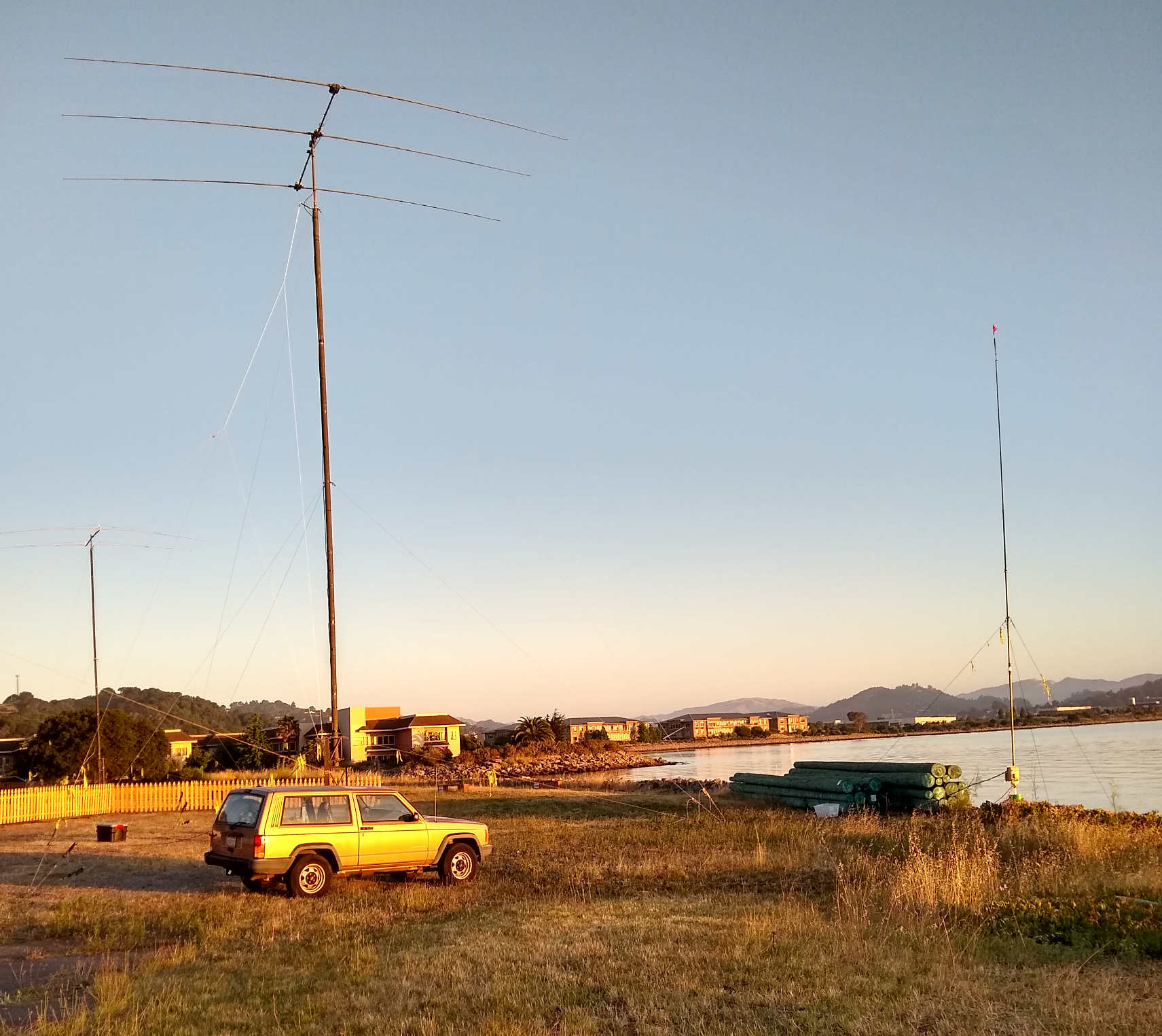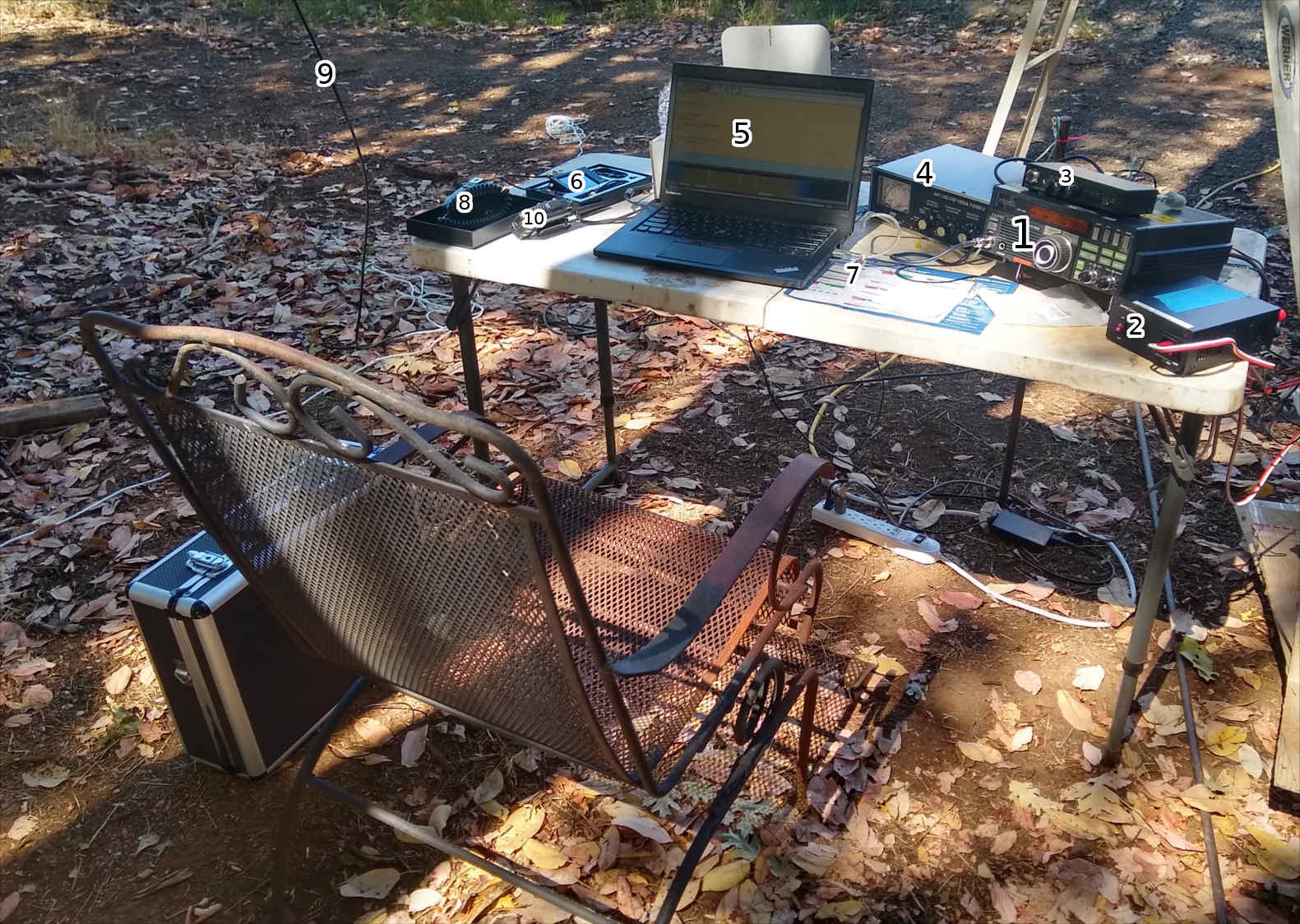Field Day 2020
ARRL field day is one of the most popular on-the-air activities among amateur radio operators. The premise is usually that one sets up in a public place, like a park, and tries to make contact with as many other stations as possible. It’s a favorite early-summer gathering for many radio clubs, and many of the groups I’ve worked it with end up having a barbecue or picnic to go along with the radio fun. As an added challenge, stations are highly encouraged to use backup power sources of some sort, and many more remote venues require this.
There’s even a somewhat competitive element to this, although how competitive each station is depends on the operators and organization behind it. Different stations get placed into different classes depending on how many transmitters they have active at a time, how much transmit power they’re running, how many people are participating, how they’re powering their equipment and so on. This means that a massive club station with dozens of operators isn’t competing with someone running a low-power radio out of their backpack, even if both of them are encouraged to contact each other on the air for points. In a normal year, the Marin Amateur Radio Society operates as a “2A” or “3A” station: An entrant that has many people working to help set up and tear down and 2 or 3 operators on the air respectively. The rules also require “A” class stations to power their equipment without using the commercial mains.

Due to current global events (stupid pandemic), my own club lost its venue for field day. As a result, for the first time ever, I had to set everything up by myself. Also, since I was traveling the week prior, I didn’t have a lot of time to do most of the prep work that I had wanted. I had thought seriously about building some new antennas prior to the event. I even ended up panic-buying a NanoVNA, which did prove to be useful in tuning the simple wire dipole I already had.
For this field day, I visited same folks I build the LAN for last year and camped out. Given that I don’t own a generator at the moment, I ended using commercial mains power for my station. This put me into the “1D” category: Single operator using commercial mains power. Usually these are amateur radio operator’s home stations. Under normal rules, these stations are not are not permitted to contact other “D” category stations for points. Because of COVID-19, the ARRL had temporarily modified to allow such contacts.

For my station, I was using my Yaesu 747GX High Frequency radio, a radio that Yaesu introduced a year before I was born. As a ‘High Frequency’ radio, it transmits lower frequencies than ‘Very High Frequency’ (VHF) and ‘Ultra High Frequency’ (UHF) radios. These lower ‘high frequency’ waves have the ability to bounce off of the ionosphere and thus allows long distance communication. In the course of field day, I managed to talk to the east coast of the US from my site in California. During better band conditions (or perhaps, with a better antenna), it’s possible to cross oceans with HF radio signals.
My antenna was a simple 40 meter half-wave dipole hung from a nearby tree. “40 Meter Half Wave Dipole” is a fancy word for “two 10M long pieces of wire on either side of the feedpoint”, making it a very simple antenna to construct. I’m able to use an antenna tuner to make it work on higher bands and I even made a few contacts on the 20 meter amateur band.
I also managed to borrow a Rigblaster Advantage from a fellow local amateur radio operator who also helped me set up my laptop to work digital modes like PSK 31. This clever piece of hardware can operate the Push-to-talk circuit as if it were the radio microphone and has an onboard soundcard, allowing for a very clean audio interface with the radio itself. These digital modes can allow communications with weaker signals than using sideband for voice would allow.

Overall, I wasn’t all that competitive, I only managed about a dozen or so contacts. I knew I wouldn’t be starting out. I did learn quite a few things along the way. I learned that my radio has some weird issues with losing stability after the transmitter has been running for a while, which pretty much ruined my ability to call “CQ” on the digital modes. I saw just how useful the NanoVNA is for setting up and tuning antennas. I learned a bit more on how to set up the various audio levels for digital modes. I saw that there was a lot more activity on VHF than I would generally expect, to the point that if I do this again I’ll have a dedicated VHF radio and antenna. At the end of the day, I did manage to get on the air and make a few contacts and I had fun doing it. I’ll call that a success this time around.